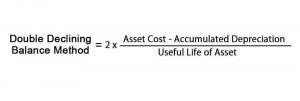
Sloppy accounting can also prevent business owners from growing or scaling their businesses as they want to. Transactions recorded in different accounting periods are a common issue, particularly when entities operate what is payment reconciliation in different time zones or follow varying fiscal calendars. For instance, one entity may record a sale in December, while the counterparty logs the same transaction in January.
- If you put payment reconciliation on the back burner, you’re playing Russian roulette with your finances.
- Reconciling a payment involves a systematic process of comparing and verifying financial records to ensure accuracy and alignment between internal records and external sources.
- Reconciling means verifying your internal financial records with bank statements.
- AzeriCard is a leading processing center in Central Asia, certified by major international payment systems such as Visa and MasterCard.
- MineralTree has the capability to feed information back and forth between any ERP system, resulting in our automation platform directly closing any relevant bills.
- Without regular transaction reconciliation, businesses may face financial inaccuracies, which can lead to poor decision-making and potential financial losses.
How do You Reconcile a Payment?
Thorough payment reconciliation can help reduce an organisation’s tax liability, as it ensures all deductible expenses are carefully recorded and categorised. If expenses aren’t accurately accounted for, the organisation misses out on opportunities to reduce its taxable income and lower its tax bill. Payment reconciliation is a crucial part of managing a business, as it allows you to review expenses, chase late payments, assess cash flow, and generally analyse your business’s financial health in real-time. Record of payment is made internallyPayments, both incoming and outgoing, are recorded internally. This is typically done using accounting software, but could also be as simple as a written list of incoming and outgoing unearned revenue transactions.
Why is automated payment reconciliation important?

This process is essential for ensuring financial statement accuracy, detecting discrepancies or errors, and preventing fraud. By implementing an efficient payment reconciliation system, businesses can streamline their financial operations and make informed decisions based on reliable data. Physical records and manual data entry are always prone to errors, making your payment reconciliation process much more difficult. Payment reconciliation is an accounting practice that confirms payment information matches with bank statements, financial statements, and other business records. An intercompany reconciliation example is when two subsidiaries of the same parent company trade goods, with one recording the sale as revenue and the other as an expense.
Who can benefit from Reconciliations?

This should be a separate document that works as an overview of your entire payment reconciliation process for that period. When subsidiaries maintain siloed data or use incompatible systems, gaining real-time access to transaction records becomes a challenge. Finance teams may struggle Food Truck Accounting to retrieve complete and accurate information, leading to delays in identifying and resolving discrepancies.
Why do you need to reconcile payments?
- A single mistake in data entry could have far-reaching consequences, making internal reconciliation a delicate process.
- To do intercompany reconciliation in Excel, create separate sheets for each entity’s transactions.
- Whatever the causes, the goal is to resolve any record discrepancies efficiently.
- But with regular and spontaneous cash reconciliation, you can reduce these kinds of risks.
- With Checkout.com reconciliation reports, you can be sure that you’ve been settled in the correct amounts and make big business decisions with confidence.
- Go through each discrepancy you find and resolve it by correcting the related records and making any necessary changes to retrieve the funds or identify why they were not received or recorded correctly.
Cash withdrawals lack detailed digital records and it’s possible that the cash was used for multiple smaller transactions. You may need to delve into physical receipts, analyse expense logs, and/or ask colleagues if they know how the cash was spent. Regular payment reconciliation is necessary for improved regulatory compliance, more accurate forecasting, effective cash flow management, cost reduction, and establishing good business practices. This area of transaction reconciliation will focus on your business’s spending and expenses.
- Thus, accurate payment reconciliation emphasizes healthy cash flows and overall financial health.
- At this step, you need to identify mismatches between the business’s records and the bank statements.
- Payment reconciliation process allows you to identify any mismatches and irregularities, such as duplicated entries, etc.
- When you receive the payment for that product in your bank account, it’ll be known as “Payment Settlement”.

The disbursements (payouts) and deposits are compared against the company’s bank statements and books in bank reconciliation. On the other hand, if any transaction doesn’t match, it’s a clear indication that there’s something wrong with the accounts. In most cases, it’s due to unrecorded transactions or errors in the amount recorded. Such errors must be identified and resolved before the end of the financial year. Use to identify unreconciled or external bank statementlines, and create an account for a transaction.
How does the reconciliation process work?

Suspicious activity is more difficult to detect across a manual payment reconciliation process, increasing the risk of fraud. This type of reconciliation involves reconciling financial transactions between various entities within the same organization, including subsidiaries, branches, or divisions. Accounts payable reconciliation involves matching vendor invoices and payments to ensure that payments made by the organization align with outstanding and completed invoices. This post covers the ins and outs of payment reconciliation in accounts payable departments and how modern platforms and automation can help streamline the AP process and reduce errors.

Payments
You can also opt to maintain the records of your transactions using Excel or Google spreadsheets. It’s another manual data entry technique and requires more time utilization than accounting software. Up-to-date, well documented accounting practices ensure companies are operating efficiently and poised for growth. The best way to make sure you’re in good financial health is to establish a robust payment reconciliation protocol.
